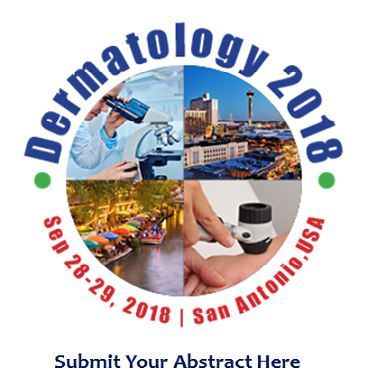
Biography
Biography: Dr. Hima Bindu Gottam
Abstract
Skin cancer is the most common type of cancer in the United States and the incidence of both non-melanoma and melanoma skin cancers continue to increase rapidly despite preventive measures. Early detection of skin cancer symptoms greatly improves the prognosis of patients with any form, in fact, the cure rate for skin cancer is very high if detected early. Hence, it is important to examine the skin regularly to check for new growths or other changes in the skin and any new growths or changes in skin should be treated without delay. Though the differential diagnosis of pigmented lesions is very challenging, the ABCDE rule, self-exams and other multi-point checklists are useful in performing the right diagnosis to the most extent. The deepunderstanding of cancer biology is required not only to diagnose the condition, but also to choose the right treatment. It is not always easy to identify the exact cause of skin cancer in a particular patient, but past medical history information, any history of excessive chemical exposure or past records of sun burns will be able to narrow down the causes for cancer duing case study. The main risk factor for skin cancer is excessive exposure to UV radiation from sunlight, which damages DNA bases and triggers mutations (genetic variations) causing changes in skin cells. Although, the DNA damage is permanant, the skin cancers can still be treatable. The most common treatment options for treating non-melanoma and melanoma skin cancers include surgical excision, chemotherapy, radiation therapy and some non-surgical options including cryosurgery, photodynamic therapy (PDT), topical chemotherapy and etc. These non-surgical options are very safe and effective in treating actinic keratosis and non-melanoma type cancers, in which, the cancer is not spread to lymph nodes or other parts of the body. Of these techniques, PDT is one of newly accepted treatment options for actinic keratoses (AKs) with clearance rates comparable to 5â€flourouracil. The understanding of the biology of this technique has advanced and the technique is considered very efficient, convenient and inexpensive. Also, the PDT has been demonstrated with several potential advantages over surgery and radiotherapy: It is comparatively a non-invasive, has more precise target, repeated doses can be given without limitations unlike radiotherapy and the healing process results are better comparatively. On the other hand, topical chemotherapeutic agent, 5-fluorouracil (FU) has become increasingly accepted since its introduction in early 1960s. The reason is its efficacy, economy and relative absence of
side effects in treating many precancerous conditions and certain benign and malignant tumors. Similarly, Diclofenac, Ingenol mebutate are used as topical gels in treating actinic keratosis and Imiquimod is useful in treating actinic keratosis and some early basal cell cancers.

